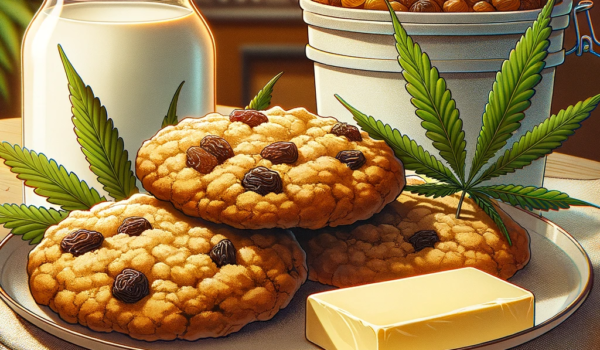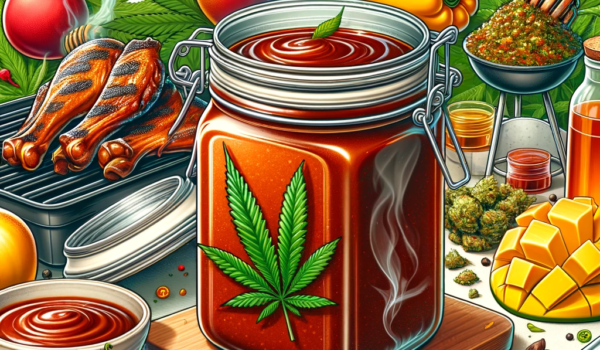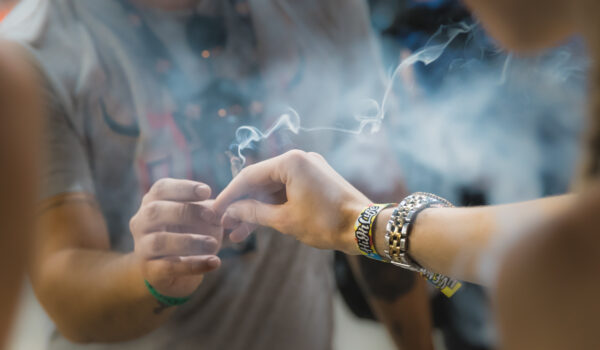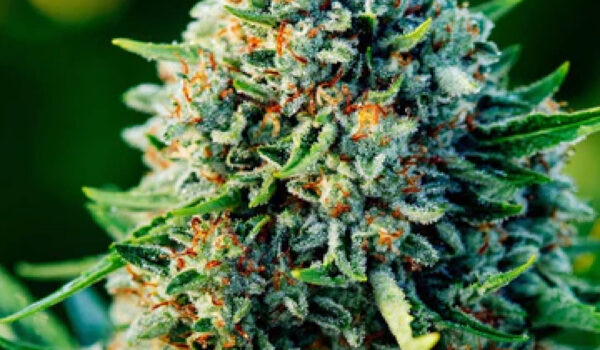by Alex Robles
We understand how to cook with cannabis better today than we did 25 years ago. Back then, it was more like wizardry than science if you could make a good batch of edibles that weren’t too strong. Luckily we now live in the future and the home chef in us all can get pretty sophisticated when we cook with cannabis. Before we start cooking with our weed, we have to understand decarboxylation and dosing. I think we should start with a little bit of math to help us understand the dosing part better. It’ll also let us know how potent the cannabis that we’re going to use should be.
A couple of other things I want to say before we get into cooking with cannabis. I want to encourage you to have a high CBD tincture on hand when you’re eating food that’s infused with THC. CBD will help dampen the intoxicating effects of THC. It’s easy to overdo it and forget when we’re eating THC in delicious food. CBD won’t bring you back to “sober” but it will help make that “high” feeling less. Also, THC that’s passed through our liver into our bloodstream is going to be more potent and intoxicating (11-hydroxy-THC) than smoked THC. So always double check your math.
Dosing Math
Legal cannabis has made it really easy to calculate how strong homemade edibles are going to be. That’s because all cannabis bought in a legal dispensary will have the THC percentage on the packaging. Knowing that percentage is vital in calculating the exact amount of THC that’s going to be in your edibles. When I use my own homegrown cannabis or some that someone gave me, I always calculate it at 18% THC. There’s no science behind my choice, that’s just what I assume it’s at. Sometimes my guess is really off and the edibles are more powerful than my math. Wait, am I rambling, I think the edibles kicked in. Let me get it together. The formula below is the easiest way I know to explain how much THC is in one cup of infused butter/oil.
1 gram of cannabis = 1000 milligrams
If your cannabis has 25% THC, the math says 25% of 1000 milligrams is 250 milligrams (using my phone calculator 1,000 x 25%= 250).
I.e. 3.6g (⅛ oz) of cannabis = 3600 milligrams.
25% THC of 3600 = 900 mg THC (3,600 x 25%= 900).
Infused into 1 cup (8 oz) of butter, the butter will now have 900 mg of THC.
When you use 1/2 cup of that butter (4oz) to make 36 cookies, then that batch will have 450 milligrams of THC. Divide 450 mg by the number of cookies. For 36 cookies there will be about 12.5 milligrams of THC in each cookie.
Decarboxylation: To Learn what it is and how I do it click here https://www.greencoastradio.com/2024/01/cannabis-alchemy-101-the-art-science-of-decarboxylation/
In Case You Didn’t Know
The cannabis trichomes (oil glands) are hydrophobic which means that water will not wash them off the plant material or your hands. This is why it’s so hard to evenly infuse non-alcoholic drinks with cannabis oil, water and oil don’t mix well. The best thing to use to strip the cannabis oil off the leaves if you’re going to cook with it is fats like butter, cooking oils and alcohol. For tasty cooking oil infusions, you can use coconut, olive, grapeseed, sunflower, almond, walnut, sesame, avocado, macadamia peanut and hemp seed oil. Chefs have told me NOT to use margarine, ordinary soybean, canola, extra virgin olive or corn oil.
Now let’s get Started
Now that we have our decarboxylated cannabis, let’s use it to make some delicious and potent cannabis-infused butter, often called “canna-butter.” This recipe is simple and easy to follow.
Skill Level: Easy
Cook time: 2hrs
Equipment and Utensils Needed:
- Saucepan – A medium-sized one will do.
- Grinder – For grinding the cannabis, if not already ground.
- Strainer – A fine mesh strainer or cheesecloth.
- Spoon – For stirring.
- Storage Container – An airtight container for storing the butter.
- Optional: Double boiler (Alternative: You can make your own double boiler by placing a heatproof bowl over a pot of simmering water).
Ingredients:
- Decarboxylated cannabis (as per your dosage preference)
- 1 cup (8 oz) of clarified butter or unsalted butter
- 1-2 teaspoons of lecithin (optional, but recommended)
Why Use Clarified Butter and Lecithin?
- Clarified Butter: It has a higher fat content compared to regular stick butter since the milk solids and water are removed. THC and other cannabinoids are fat-soluble, meaning they bind better to fats, making clarified butter more efficient for infusion. Plus the water and milk solids in regular stick butter don’t allow the cannabis oil to infuse evenly since oil and water don’t mix
- Lecithin: It acts as an emulsifier, improving the potency and homogeneity of the infusion. It can also increase the absorption of THC in the body.
Note: There are a lot of videos on the internet that will show you how to clarify stick butter on your stove top. Just in case you can’t find clarified butter
Steps:
- Prepare the Butter: Melt the clarified butter in a saucepan or double boiler over low heat. (if you butter is boiling it’s too high and the butter is burning)
- Add Cannabis: Add your decarboxylated cannabis. Stir gently.
- Simmer: Keep the mixture on low heat for 2-3 hours, stirring occasionally. Avoid boiling to prevent burning.
- Strain: After simmering, strain the mixture through a fine mesh or cheesecloth into your storage container. Do not squeeze the cheesecloth too hard to avoid excess plant material in your butter.
- Cool and Store: Allow the butter to cool and then store it in the refrigerator. The canna-butter will solidify and can be used as regular butter in various recipes.
Safety Precautions:
- Low and Slow: Always use low heat to prevent burning the butter or destroying the THC.
- Ventilation: Ensure your kitchen is well-ventilated, as the process can produce strong odors.
- Storage: Label the canna-butter clearly and keep it out of reach of children and pets.
- Consumption: Start with a small amount to gauge its potency and effects, as edibles can take longer to take effect and can be more potent than other forms of cannabis consumption.
Coconut Oil vs. Butter
While the method of infusing coconut oil with cannabis mirrors that of butter, there are notable differences to keep in mind, which can influence both the potency and flavor profile of your sauce:
- Higher Fat Content: Coconut oil boasts a higher saturated fat content than butter. Why does this matter? Well, THC and other cannabinoids are fat-soluble, meaning they bind more efficiently with fats. This higher fat content in coconut oil can potentially lead to a more potent infusion, ensuring that your sauce packs both a flavor and experiential punch.
- Distinct Flavor Profile: One of the charming aspects of coconut oil is its unique taste and aroma. This characteristic can be more pronounced in your final product, offering a distinct twist compared to the more neutral flavor of butter. The tropical notes of coconut can complement the mango puree in our sauce, creating a more complex and intriguing flavor journey.
- Vegan and Dairy-Free: For those who embrace a vegan or dairy-free lifestyle, coconut oil is an excellent alternative. It’s a plant-based fat that aligns with such dietary preferences, making our Bar-B-Q and Wing Sauce a versatile choice for various lifestyles.
Embracing the Coconut Oil Advantage
By choosing canna-coconut oil for our recipe, we’re not just infusing a sauce; we’re creating a culinary experience that’s inclusive, potent, and rich in flavor. Whether you’re a vegan, seeking a more potent infusion, or simply love the taste of coconut, this sauce is designed to delight a wide array of palates.
🌿🥥 Ready to infuse and impress? Visit our website for more tips on cannabis cooking and to explore a world of flavor-infused recipes!
Remember, the key is to infuse the butter gently and patiently. Enjoy your cooking adventures with canna-butter!









